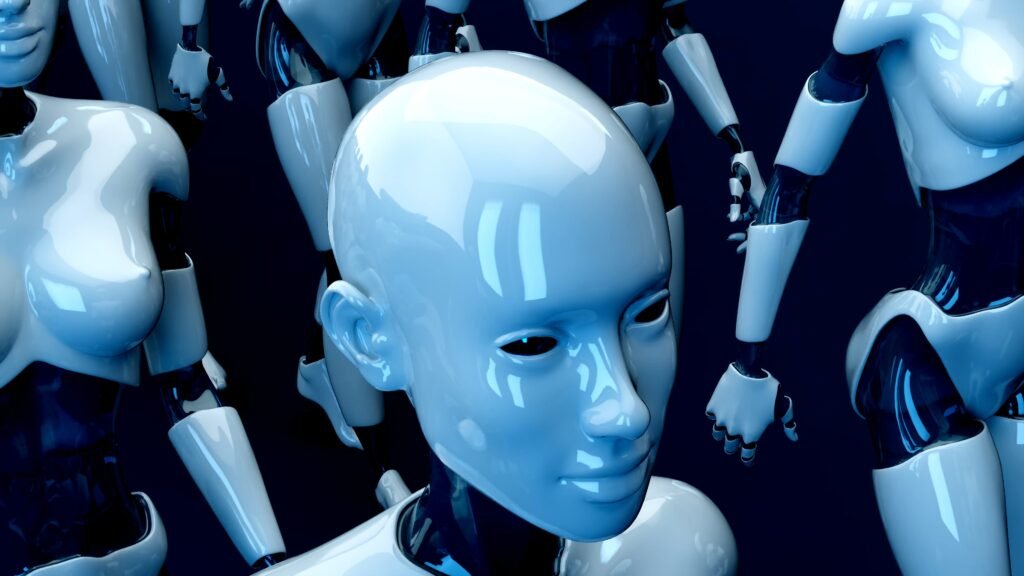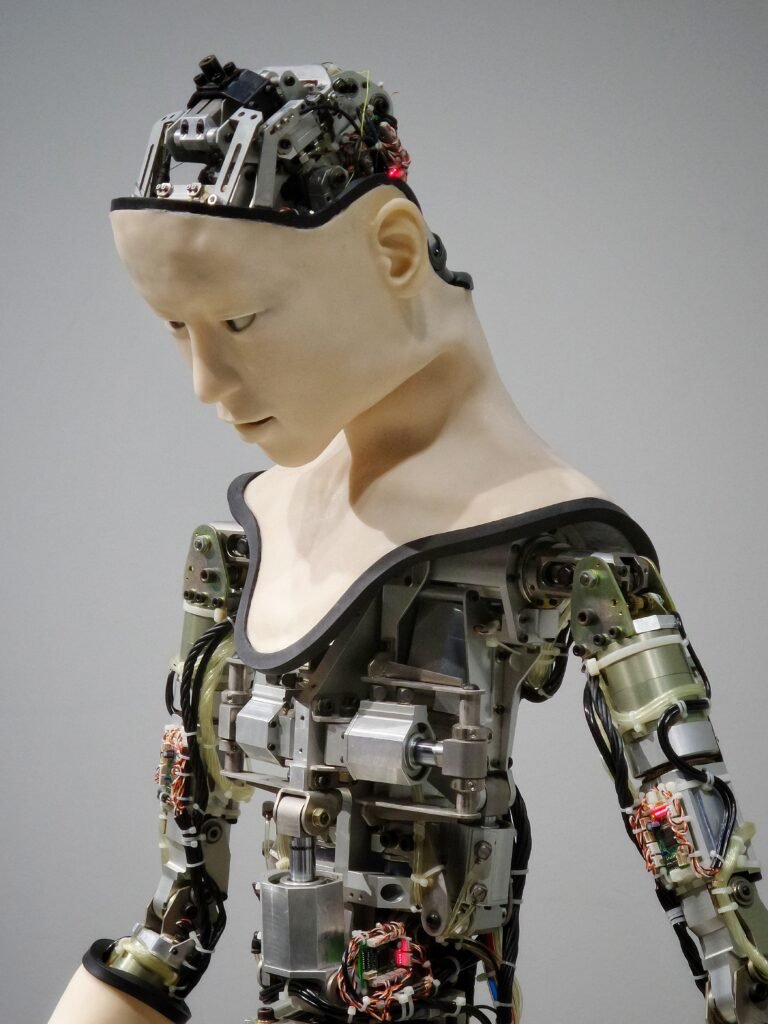In the rapidly advancing field of video surveillance, artificial intelligence (AI) is playing a pivotal role in revolutionizing how we monitor, analyze, and interpret video data. With AI-powered systems, surveillance cameras are now capable of much more than just capturing video footage; they can detect and alert us to potential threats, identify suspicious behavior and objects, and even predict and prevent crimes before they occur. By harnessing the power of AI, video surveillance has evolved into an intelligent and proactive tool that enhances security and safety in various environments, from public spaces to private facilities.
Application of AI in Video Surveillance
Facial Recognition
Facial recognition technology is a key application of AI in video surveillance. With AI algorithms, surveillance systems can accurately detect and identify individuals in real-time. This technology has numerous applications, from identifying known criminals or missing persons to enhancing security measures at airports, border crossings, and other public areas. Facial recognition enables quick and efficient identification of individuals, making it an indispensable tool in video surveillance.
Object Detection
AI-powered object detection technology allows video surveillance systems to detect and track objects of interest in real-time. Whether it’s a suspicious package left unattended or a person carrying a weapon, object detection algorithms can quickly identify and alert security personnel, reducing response time and enhancing overall security. This application of AI in surveillance not only helps prevent potential threats but also aids in forensic investigations by providing crucial evidence.
Anomaly Detection
Anomaly detection is a powerful application of AI in video surveillance that enables surveillance systems to identify unusual behaviors or events. By learning from past patterns, AI algorithms can detect anomalies, such as a person loitering in an area for an extended period or a vehicle driving against the flow of traffic. This technology improves situational awareness and enables security personnel to take proactive measures, mitigating potential risks before they escalate.
License Plate Recognition
AI-powered license plate recognition technology is widely used in video surveillance systems to automatically read and identify license plates of vehicles. This technology is crucial in various applications, including toll collection, parking management, and traffic enforcement. By automating the process of reading license plates and cross-referencing them with databases, law enforcement agencies can quickly identify stolen or wanted vehicles, aiding in crime prevention and investigation.
Behavior Analysis
Behavior analysis is an advanced application of AI in video surveillance that leverages machine learning algorithms to understand and analyze human behavior patterns. By analyzing factors such as body language, gestures, and movement, surveillance systems can detect suspicious or abnormal behavior, allowing security personnel to intervene promptly. Behavior analysis can be particularly useful in crowded public spaces, where potential threats or criminal activities can be detected and addressed effectively.
Benefits of AI in Video Surveillance
Improved Security
The integration of AI in video surveillance significantly enhances security measures. With advanced facial recognition, object detection, and anomaly detection capabilities, surveillance systems can quickly identify potential threats, enabling security personnel to respond promptly. This improved security not only helps prevent crime but also provides a greater sense of safety for individuals and communities.
Real-time Monitoring
AI-powered video surveillance systems offer real-time monitoring capabilities, allowing security personnel to monitor situations as they unfold. By continuously analyzing video feeds, these systems can detect and alert operators of any suspicious activities or events, enabling timely intervention. Real-time monitoring ensures that security personnel stay proactive and can respond swiftly to any potential threats or emergencies.
Advanced Analytics
AI enables video surveillance systems to perform advanced analytics on video footage, extracting valuable insights and patterns. This analysis can help identify trends, understand visitor behavior, and optimize security operations. By leveraging AI algorithms, surveillance systems can generate actionable intelligence, enabling security personnel to make informed decisions and implement effective security strategies.
Reduced False Alarms
Traditional surveillance systems often generate numerous false alarms, leading to wasted resources and decreased efficiency. AI-powered video surveillance systems can significantly reduce false alarms by accurately distinguishing between suspicious and non-threatening activities. By leveraging advanced algorithms, these systems can filter out noise and focus on relevant events, minimizing false alarms and ensuring that security personnel prioritize genuine threats.
Cost-Efficiency
Implementing AI in video surveillance systems can lead to cost savings in various ways. By automating tasks such as facial recognition, object detection, and behavior analysis, fewer human resources are required for monitoring and analysis. This not only reduces labor costs but also increases efficiency. Additionally, AI-powered surveillance systems can help prevent costly incidents such as theft, vandalism, and unauthorized access, resulting in long-term cost savings for businesses and organizations.

This image is property of images.unsplash.com.
Challenges of AI in Video Surveillance
Reliability
While AI-powered video surveillance systems offer numerous benefits, their reliability is a crucial challenge to overcome. The accuracy of facial recognition, object detection, and behavior analysis algorithms can vary depending on various factors such as lighting conditions, camera angles, and environmental variables. To ensure reliable performance, continuous research and development are necessary to improve the accuracy and robustness of AI algorithms.
Privacy Concerns
The integration of AI in video surveillance raises significant privacy concerns. Facial recognition and behavior analysis technologies, in particular, have the potential to infringe upon individuals’ privacy rights. Striking a balance between security and privacy is essential to maintain public trust and compliance with privacy regulations. Implementing stringent data protection measures, ensuring transparency, and obtaining consent from individuals can help address these concerns and protect privacy.
Ethical Considerations
AI-powered video surveillance raises ethical considerations, particularly in terms of the potential for bias or discriminatory outcomes. AI algorithms, if not properly trained or validated, can perpetuate biases present in the training data, leading to unfair profiling or discrimination against certain groups. Addressing these ethical considerations requires adopting ethical guidelines, continuous monitoring of AI systems, and ensuring diversity in training datasets to avoid biases.
Data Storage and Processing
AI-powered video surveillance systems generate vast amounts of data that must be processed and stored efficiently. This presents challenges in terms of infrastructure requirements, including network bandwidth, storage capacity, and computational resources. Ensuring robust data storage and processing capabilities is crucial to maintain the integrity and availability of video surveillance data.
Integration of AI and Video Surveillance Systems
Hardware Requirements
Integrating AI into video surveillance systems often requires specific hardware to ensure optimal performance. High-quality cameras capable of capturing clear and detailed images are essential for accurate facial recognition and object detection. Additionally, powerful processors and graphics cards are necessary to process and analyze the vast amount of video footage in real-time. Investing in the right hardware infrastructure is key to unlocking the full potential of AI in video surveillance.
Software Integration
The successful integration of AI into video surveillance systems relies on robust software solutions. AI algorithms need to be seamlessly integrated into existing video management software, enabling real-time analysis and efficient data processing. Close collaboration between AI developers and video surveillance software providers is crucial to ensure compatibility and optimal performance.
Cloud Services
Leveraging cloud services for AI-powered video surveillance can bring numerous benefits. Cloud-based solutions offer scalability, as they can handle large amounts of video data from multiple cameras. Additionally, cloud services provide flexibility, allowing access to video feeds and analytics from anywhere with an internet connection. Cloud-based video surveillance also enables centralized data storage, making it easier to manage and retrieve footage when needed.
Scalability
Scalability is a critical factor in integrating AI and video surveillance systems. As organizations expand their surveillance networks or add new cameras, the system should be able to accommodate the increased data processing requirements. Scalability can be achieved by leveraging distributed computing resources, such as edge computing or cloud-based solutions. Ensuring that the system can scale seamlessly as the surveillance needs grow is essential for long-term success.

This image is property of images.unsplash.com.
Key Technologies Used in AI Video Surveillance
Deep Learning
Deep learning is a key technology used in AI video surveillance systems. It involves training neural networks with large amounts of data to recognize patterns and make accurate predictions. Deep learning enables advanced capabilities such as facial recognition, object detection, and behavior analysis, allowing surveillance systems to extract valuable information from video footage.
Computer Vision
Computer vision plays a crucial role in AI video surveillance by enabling machines to “see” and analyze visual data. This technology involves extracting meaningful information from images or video, including object detection, tracking, and classification. Computer vision algorithms enable surveillance systems to understand and interpret the visual world, making them essential for effective video surveillance.
Natural Language Processing
Natural language processing (NLP) is a key technology used in AI video surveillance to analyze and understand spoken or written language. NLP algorithms can be applied to audio from surveillance cameras or other sources to detect keywords or identify specific conversations. This technology enhances the capabilities of video surveillance systems by providing insights into conversations or spoken content that can aid in investigations or threat detection.
Machine Learning Algorithms
Machine learning algorithms are a fundamental component of AI video surveillance systems. These algorithms enable systems to learn from data, detecting patterns and making predictions or recommendations. Machine learning algorithms can be used for various applications, from anomaly detection to predictive analysis. By continuously learning and adapting, machine learning algorithms enhance the capabilities of video surveillance systems.
AI-Powered Video Analytics
Real-time Event Detection
AI-powered video analytics enables real-time event detection in video surveillance systems. By constantly analyzing video feeds, algorithms can identify specific events, such as a person running, a car accident, or a breach of a secure area. Real-time event detection allows security personnel to respond promptly, ensuring effective incident management.
Predictive Analysis
Predictive analysis is an essential feature of AI video analytics. By analyzing historical data and identifying patterns, algorithms can make predictions about future events or behaviors. This capability enables proactive security measures and helps prevent potential security incidents by identifying suspicious activities or individuals before any harm occurs.
Pattern Recognition
Pattern recognition is a key component of AI video analytics, enabling systems to recognize and extract meaningful patterns from video footage. By identifying recurring patterns, algorithms can reveal valuable insights, such as detecting specific behaviors or identifying trends. Pattern recognition allows security personnel to better understand the environment and make informed decisions based on the available data.
Behavioral Analytics
Behavioral analytics is a powerful application of AI video analytics that focuses on analyzing human behavior in video surveillance footage. By analyzing factors such as body language, gestures, and movement patterns, algorithms can detect suspicious or abnormal behavior. Behavioral analytics enhances situational awareness and enables security personnel to take appropriate actions, mitigating potential risks.

This image is property of images.unsplash.com.
AI in Video Surveillance for Public Safety
Crowd Monitoring
AI-powered video surveillance systems play a crucial role in crowd monitoring for public safety purposes. By analyzing video feeds from multiple cameras, algorithms can detect overcrowding, identify potential conflicts, and monitor crowd movements. This application is particularly useful in public events, transportation hubs, and crowded areas, where quick responses and effective crowd management are essential.
Threat Detection
AI-powered video surveillance systems aid in threat detection by analyzing video feeds for potential threats or suspicious activities. Through facial recognition, object detection, and behavior analysis, algorithms can identify individuals on watchlists, detect weapons, or identify abnormal behaviors that may indicate a threat. Threat detection capabilities bolster security measures in public spaces and contribute to proactive threat prevention.
Traffic Analysis
AI-powered video surveillance systems can significantly enhance traffic analysis and management. By analyzing video feeds from traffic cameras, algorithms can detect traffic congestion, identify traffic violations, and optimize traffic flow. This capability enables authorities to implement effective traffic management strategies, reduce congestion, and improve overall road safety.
Emergency Response
AI-powered video surveillance systems are invaluable tools in emergency response scenarios. By continuously monitoring video feeds, algorithms can detect emergencies such as fires, accidents, or suspicious activities. This real-time information allows emergency services to deploy resources promptly and effectively, enabling rapid response and minimizing damage or harm.
Ethical Considerations and Privacy Concerns
Unauthorized Surveillance
One of the main ethical considerations in AI video surveillance is the potential for unauthorized or mass surveillance. AI-powered video surveillance systems must be deployed and used responsibly to prevent unwarranted intrusion into individuals’ lives. Strict access controls, clear policies, and well-defined guidelines are necessary to ensure that surveillance is conducted within legal and ethical boundaries.
Biased Algorithms
Bias in AI algorithms is another significant ethical concern in video surveillance. If algorithms are not properly trained or validated, they can perpetuate biases present in the training data, leading to discriminatory outcomes. It is crucial to monitor and address biases in AI algorithms to ensure fair and unbiased surveillance practices.
Invasion of Privacy
AI video surveillance systems have the potential to infringe upon individuals’ privacy rights. Facial recognition and behavior analysis technologies raise concerns regarding the gathering and storing of personal data without consent. Protecting privacy requires implementing robust data protection measures, obtaining informed consent, and ensuring transparency in the use of AI in video surveillance.
Misuse of Data
The potential misuse of data collected by AI-powered video surveillance systems is a significant ethical concern. Safeguarding the collected data and ensuring its lawful and ethical use is essential. Proper data governance practices, secure storage, and strict access controls are crucial to prevent unauthorized access or misuse of sensitive information.
Regulations and Legal Frameworks
Data Protection Laws
Data protection laws play a crucial role in regulating the use of AI in video surveillance. These laws govern the collection, processing, and storage of personal data, ensuring individuals’ privacy rights are protected. Compliance with data protection laws, such as the General Data Protection Regulation (GDPR) in Europe, is essential for organizations deploying AI video surveillance systems.
Ethical Guidelines
Ethical guidelines provide a framework for responsible and ethical use of AI in video surveillance. These guidelines address issues such as bias, privacy, and fairness. Organizations should adhere to established ethical guidelines, such as those developed by the International Organization for Standardization (ISO), to ensure ethical practices in deploying and operating AI video surveillance systems.
Surveillance Laws
Surveillance laws vary across jurisdictions and set the legal framework for the use of video surveillance. These laws define the permissible purposes of surveillance, the retention of data, and access to video footage. Adhering to surveillance laws is crucial to ensure compliance and legitimacy in deploying AI video surveillance systems.
Cross-border Data Transfer
Cross-border data transfer regulations may impact the use of AI in video surveillance, particularly when data is transferred between jurisdictions with different data protection laws. Organizations must ensure that data transfers comply with applicable regulations and implement necessary safeguards to protect personal data during international data transfers.
Future Trends and Developments
Edge Computing
Edge computing is an emerging trend in AI video surveillance that involves processing and analyzing data closer to its source, at the edge of the network. This enables real-time video analytics with reduced latency and bandwidth requirements. Edge computing technology enables faster response times, efficient data processing, and increased scalability in video surveillance systems.
Cloud-based Solutions
Cloud-based solutions are expected to continue playing a significant role in the future of AI video surveillance. The scalability, flexibility, and centralization offered by cloud services make them ideal for managing large-scale video surveillance systems. Cloud-based solutions also enable seamless integration with other AI technologies, such as machine learning and data analytics, enhancing overall system capabilities.
Autonomous Surveillance Systems
The development of autonomous surveillance systems is an exciting future trend in AI video surveillance. These systems leverage advanced AI algorithms, robotics, and machine learning to perform tasks traditionally carried out by humans, such as patrolling, monitoring, and responding to security incidents. Autonomous surveillance systems promise greater efficiency, accuracy, and cost-effectiveness in video surveillance operations.
Multi-modal Integration
The integration of multiple AI technologies, such as facial recognition, object detection, and behavior analysis, is a future trend in AI video surveillance. By combining different modalities, surveillance systems can extract more comprehensive insights and enhance accuracy. Multi-modal integration enables a holistic approach to video surveillance, providing a deeper understanding of the environment and potential threats.
In conclusion, AI has revolutionized video surveillance by enabling advanced capabilities such as facial recognition, object detection, anomaly detection, and behavior analysis. The application of AI in video surveillance offers numerous benefits, including improved security, real-time monitoring, advanced analytics, reduced false alarms, and cost-efficiency. However, challenges such as reliability, privacy concerns, ethical considerations, and data storage and processing must be addressed. The integration of AI and video surveillance systems requires specific hardware, software integration, and scalability considerations. Key technologies used in AI video surveillance include deep learning, computer vision, natural language processing, and machine learning algorithms. AI-powered video analytics enables real-time event detection, predictive analysis, pattern recognition, and behavioral analytics. AI in video surveillance plays a crucial role in public safety, including crowd monitoring, threat detection, traffic analysis, and emergency response. Ethical considerations and privacy concerns must be addressed, and compliance with regulations and legal frameworks is essential. Future trends in AI video surveillance include edge computing, cloud-based solutions, autonomous surveillance systems, and multi-modal integration.
